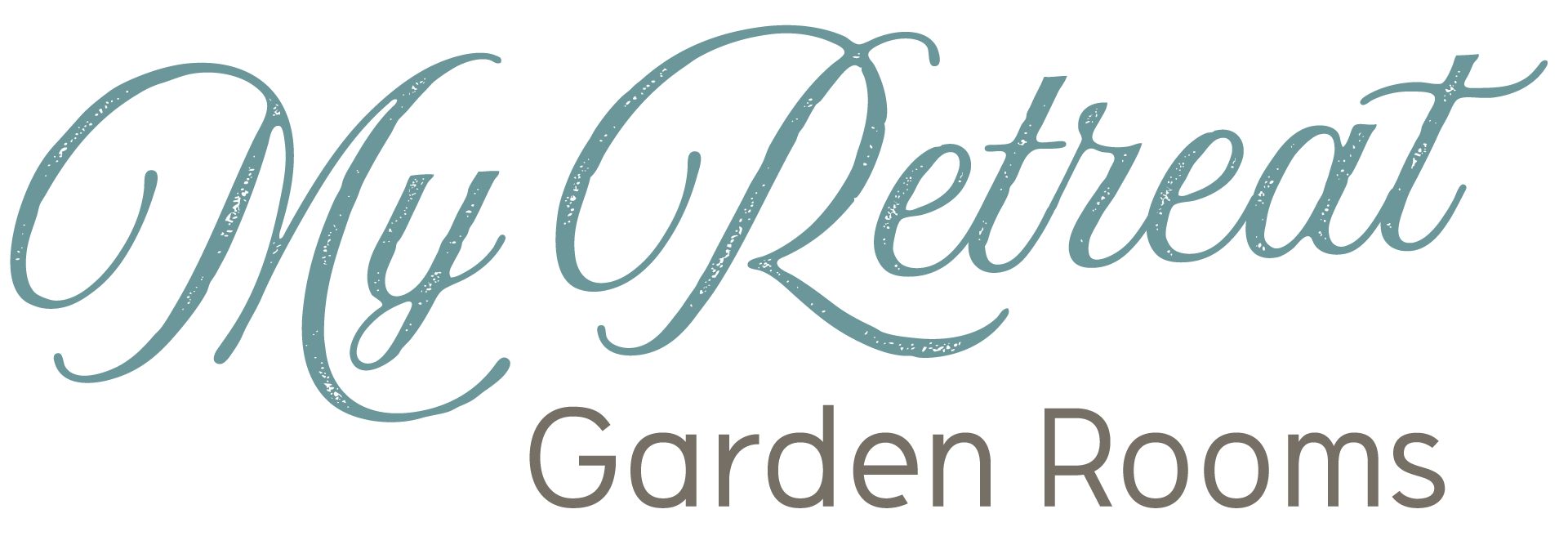Garden Room Cladding Options
When choosing cladding for your garden room, several factors such as durability, maintenance, aesthetics, and environmental impact play crucial roles. Here’s a quick comparison of various cladding options to help you make an informed decision.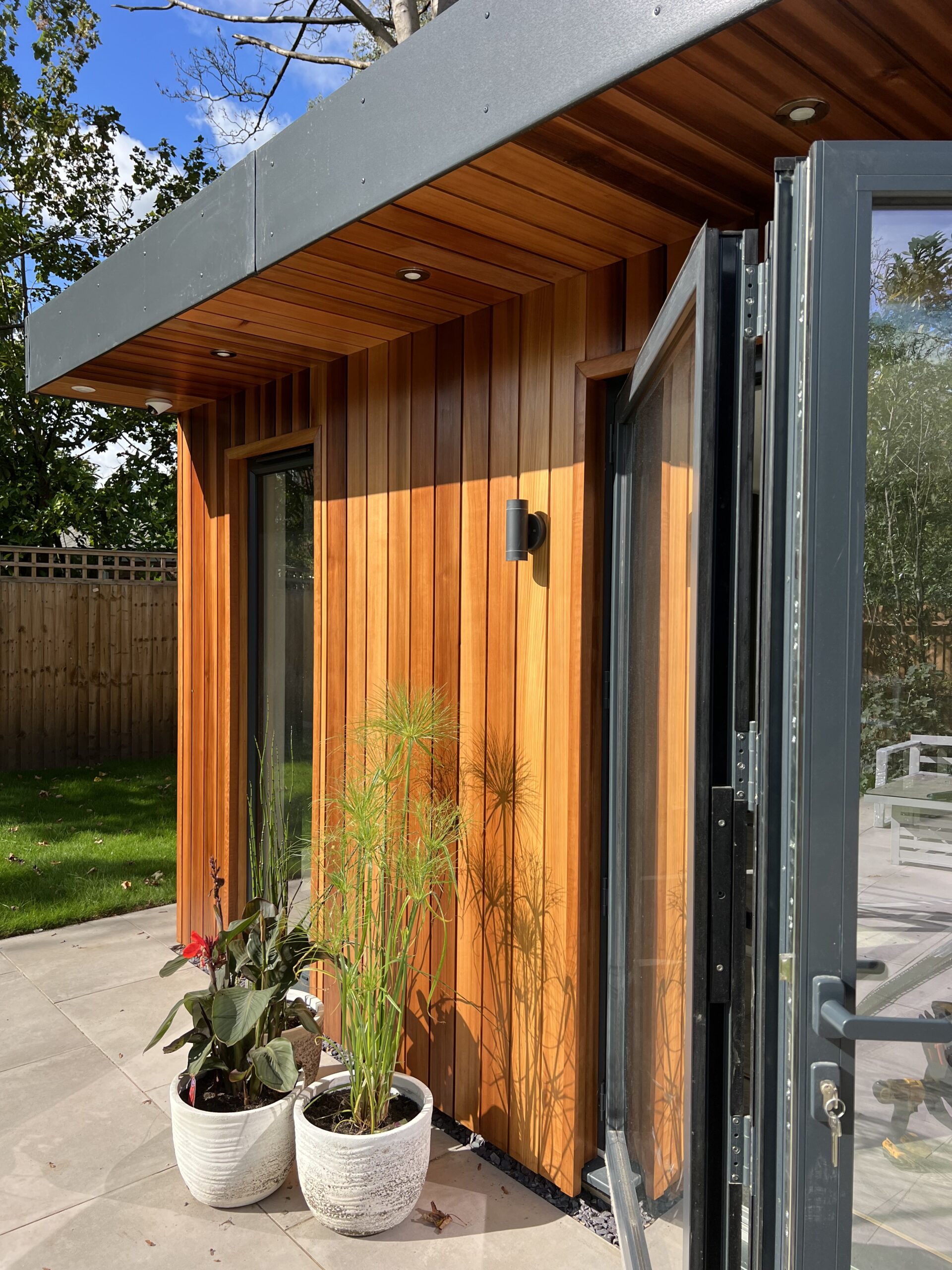
Cedar Clad Garden Room
Pros:- Natural Beauty: Distinctive rich hues of orange and red make a garden room look fabulous
- Durability: Resistant to decay and insects due to natural oils
- Sustainability: Renewable resources with a low carbon footprint.
- Maintenance: Requires periodic staining or oiling
- Cost: Generally higher compared to some alternatives
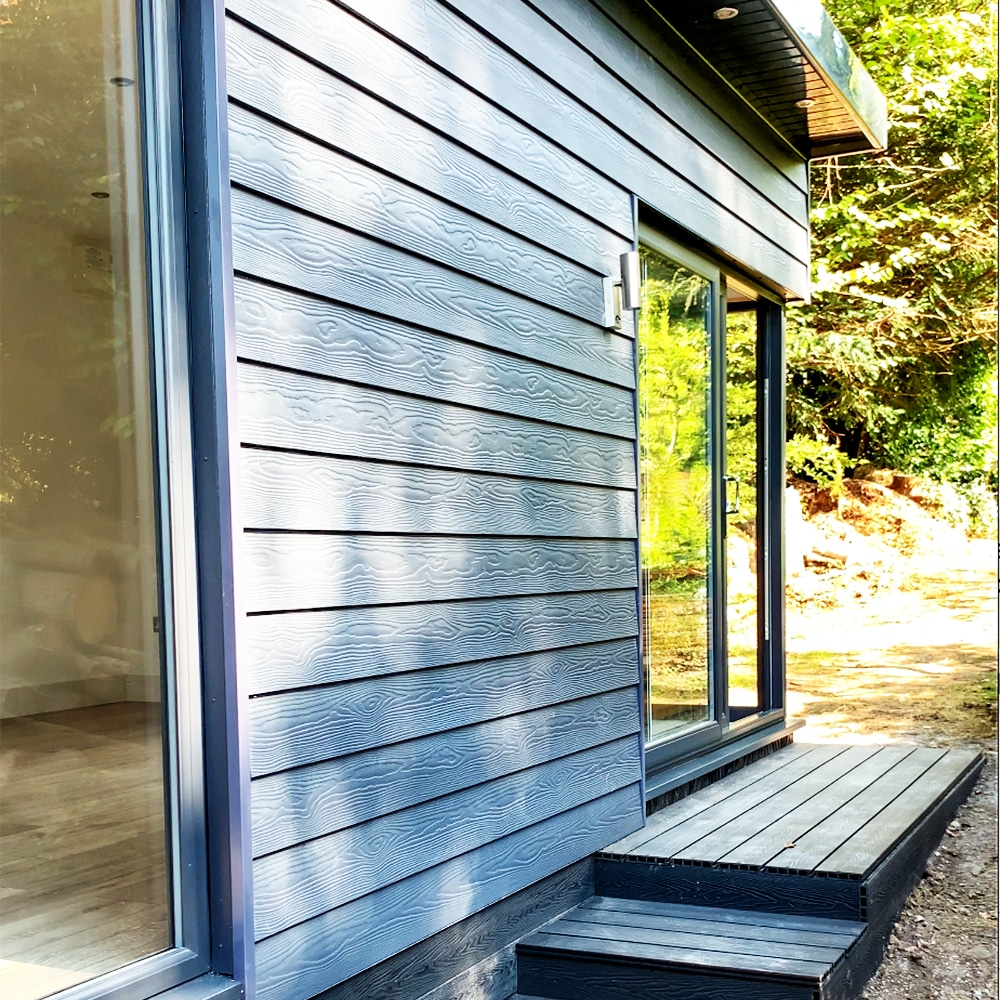
James Hardie Plank Cladding
Pros:- Durability: Resistant to fire, moisture, and pests
- Low Maintenance: Minimal upkeep required
- Design Options: Available in 20+ colours and textures
- Longevity: Will outlast traditional wood cladding.
- Installation: Labout intensive as the cladding must be cut and fitted on site as the panels would be too heavy if they were clad in the factory like timber cladding. The ends also need painting after being cut to protect them
- Environmental Impact: Higher than natural wood due to cement content.
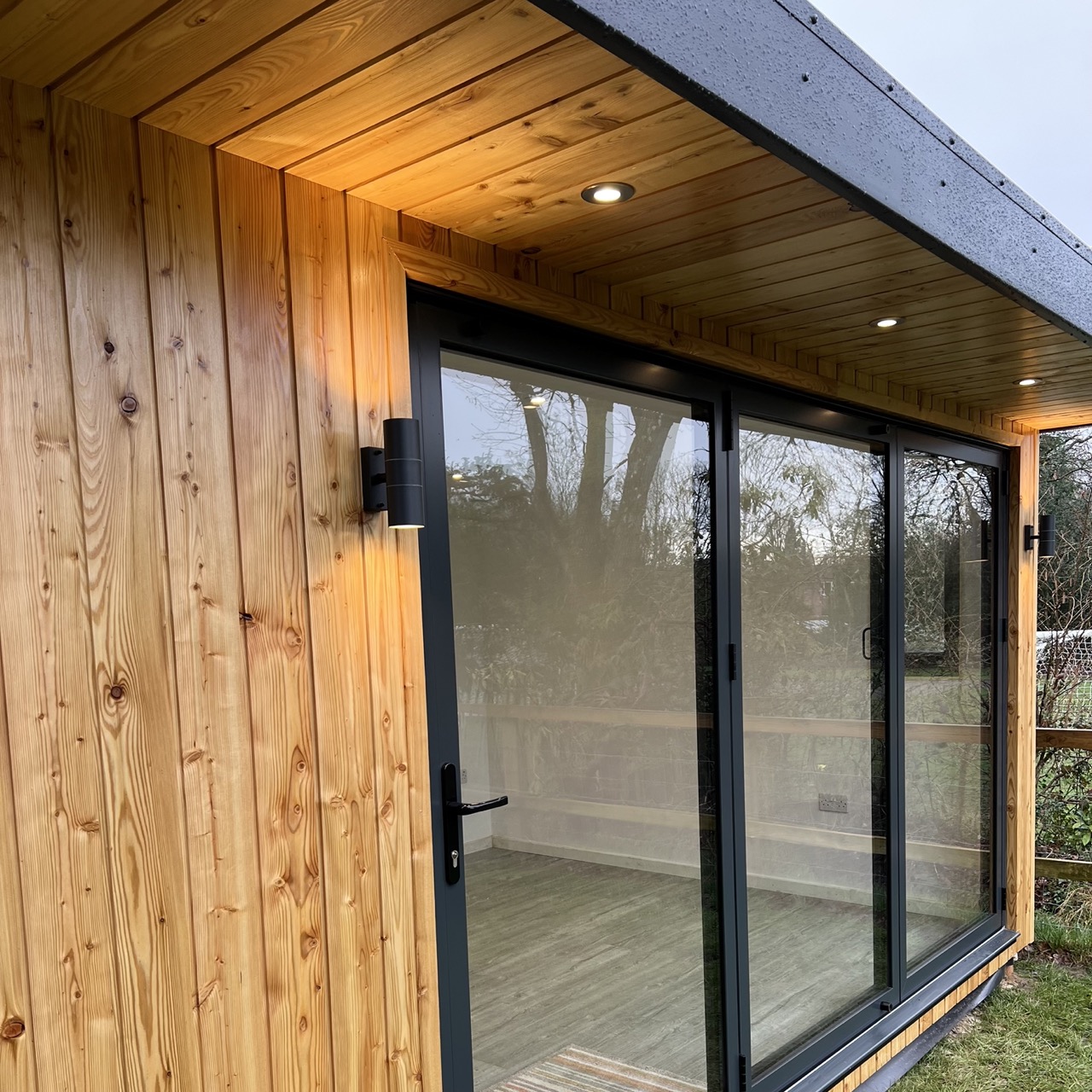
Larch
Pros:- Natural Strength: Tough and durable
- Aesthetic Appeal: Ages gracefully with a warm appearance
- Dimensional Stability: Resists warping better than something like Redwood
- Cost-Effective: Generally less expensive
- Maintenance: Requires periodic treatments because it will begin to fade and lose its colour if not treated/oiled every 12-18 months like any natural timber cladding. However, that is a look that some people like, see here for an example of a silvered larch and how nice it looks: Witness The Transformation of a Lifetime.
- Stability: Larch boards will shrink and expand through the year and may distort or move
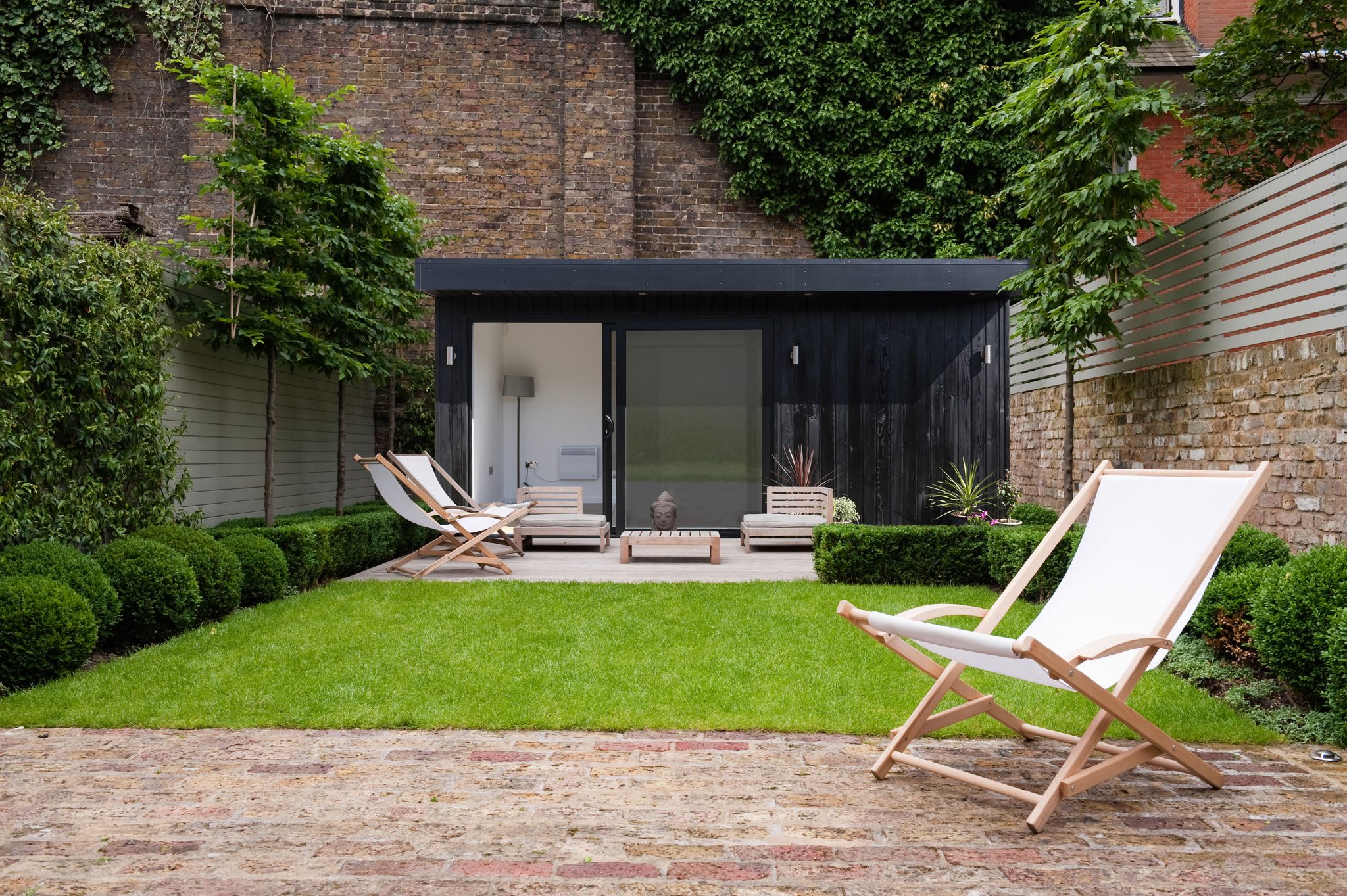
Charred Larch (Shou Sugi Ban)
Pros:- Unique Aesthetic: Modern, rustic appearance
- Enhanced Durability: Resistant to pests and fire
- Low Maintenance: The charred layer protects the wood.
- Maintenance: Requires periodic treatments because it will begin to fade and lose its colour if not treated/oiled every 12-18 months like any natural timber cladding.
- Higher Initial Cost: It can be labour-intensive as any cuts or exposed ends require charring after cutting
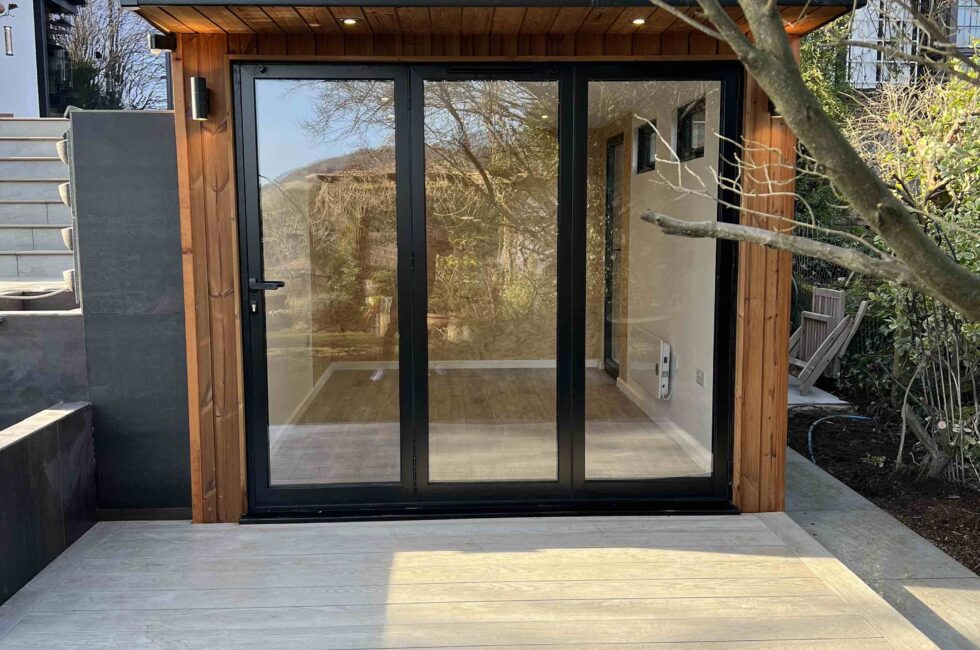
Thermowood
Pros:- Dimensional Stability: Thermowood is an ultra-heated timber that reduces the risk of raking, warping and shrinking
- Durability: Improved resistance to decay and insects
- Environmental Benefits: Heat-treated rather than chemically treated.
- Mid-range Cost: It is a lot more durable than Redwood and Larch and cheaper than Cedar and the composite options
- Colour Fading: Will silver off over time if not treated with oil etc every 12-18 months
- Aesthetics: It's a very traditional look and requires lots of doors and windows to break up dark brown boards of cladding, which I think can be too much on large sections, but that is a personal choice. Like any natural timber, it will silver off over time if not oiled once every 12-18 months.
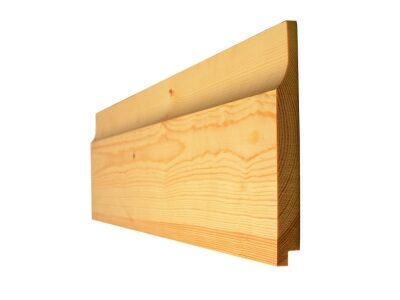
Redwood
Pros:- Natural Beauty: Pale golden hues, perfect if you are going to paint your garden room
- Cost-effective: One of, if not the cheapest ways to clad your garden room
- Sustainability: Renewable resource with a moderate carbon footprint
- Durability: As it is a soft wood it is prone to twisting, warping and splitting. Most garden room companies will only give a 5-year guarantee rather than a 10-year guarantee.
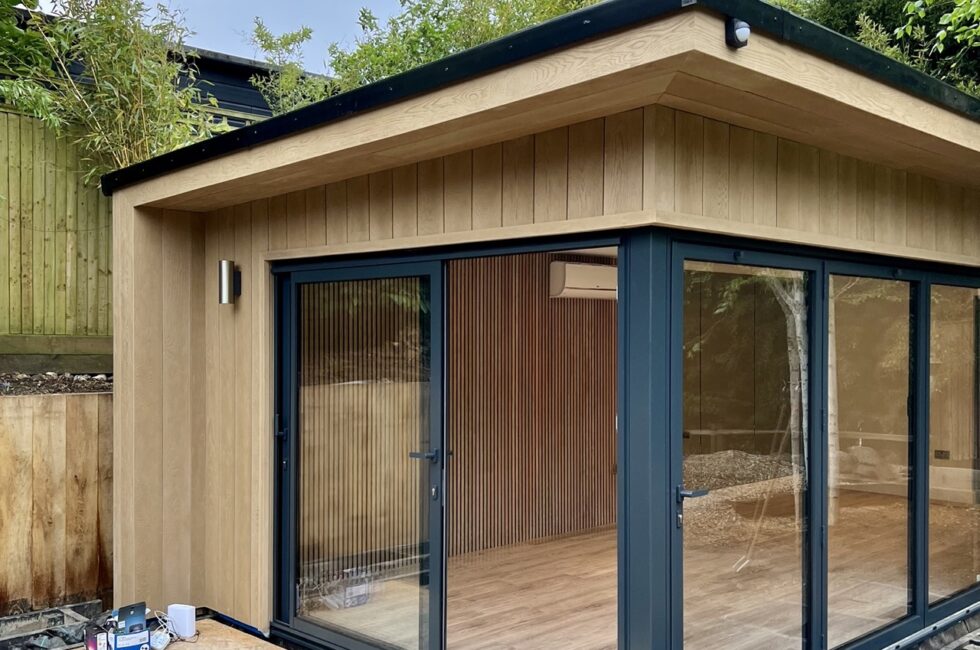
Millboard Cladding
Pros:- Low Maintenance: Requires minimal upkeep, only occasional cleaning
- Durability: Resistant to fading, scratching, and mould
- Aesthetic Options: Mimics the look of natural wood without the maintenance
- Cost: Generally more expensive upfront
- Aesthetics: The look isn't everyone's cup of tea.

EcoScape Slatted Composite Cladding
Pros:- Low Maintenance: Requires minimal upkeep, only occasional cleaning
- Durability: Resistant to fading, scratching, and mould
- Aesthetic Options: Mimics the look of natural wood without the maintenance
- Cost: Generally more expensive, especially as it needs to be cut and fixed onsite rather than in the factory due to the weight, but it will outlive natural timber.
- Aesthetics: The look isn't everyone's cup of tea.
Answering Your Key Questions:
What is the cheapest way to clad a garden room?
Larch and Redwood are generally more cost-effective options compared to cedar or specialized cladding like Charred Larch or Millboard.What is the longest-lasting exterior cladding?
James Hardie Plank and Millboard are known for their durability and will typically outlast traditional wood options due to their resistance to moisture, pests, and fire.What is the best low-maintenance exterior cladding?
James Hardie Plank and Millboard Cladding require minimal maintenance, making them ideal for those seeking hassle-free solutions.What looks better, horizontal or vertical cladding?
This is subjective and depends on personal preference and the design of the garden room. Horizontal cladding often provides a traditional look, while vertical cladding can offer a more contemporary appearance.What is the most environmentally friendly cladding?
Canadian Western Red Cedar, Larch, and Thermowood are all considered environmentally friendly due to their renewable nature and minimal processing requirements. However, companies such as EcoScape, James Hardie and Millboard use recycled materials in their products, which prevents landfill and helps sustain the earth's limited resources.What type of cladding is best?
The best type of cladding depends on your specific priorities—whether it's durability, aesthetics, maintenance requirements, or environmental concerns. Each option offers unique benefits, so the choice ultimately depends on what factors are most important for your garden room project. By considering these factors and understanding the characteristics of each cladding option, you can select the one that best suits your needs and preferences for your garden room project. What would you like to do next?- Design your garden room for free and get an instant price that will be installed by us.
- Find out how much a garden room costs.
- Find out how much a pod kit costs.
- Go to the Planning Portal to read more on Building Regulations
- Go to the Planning Portal to find out more about Planning Permission and find your Local Authority
